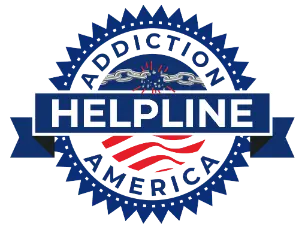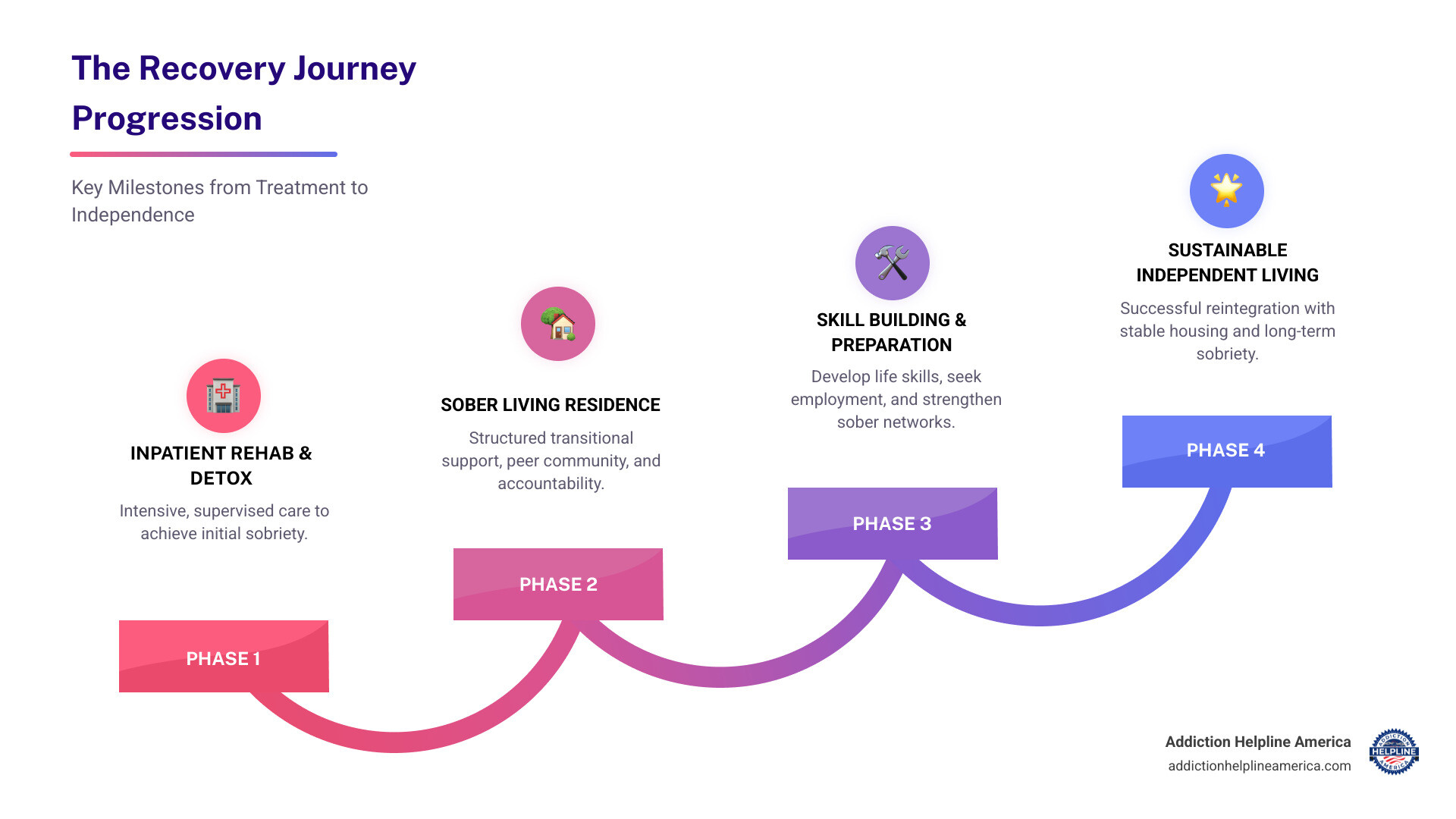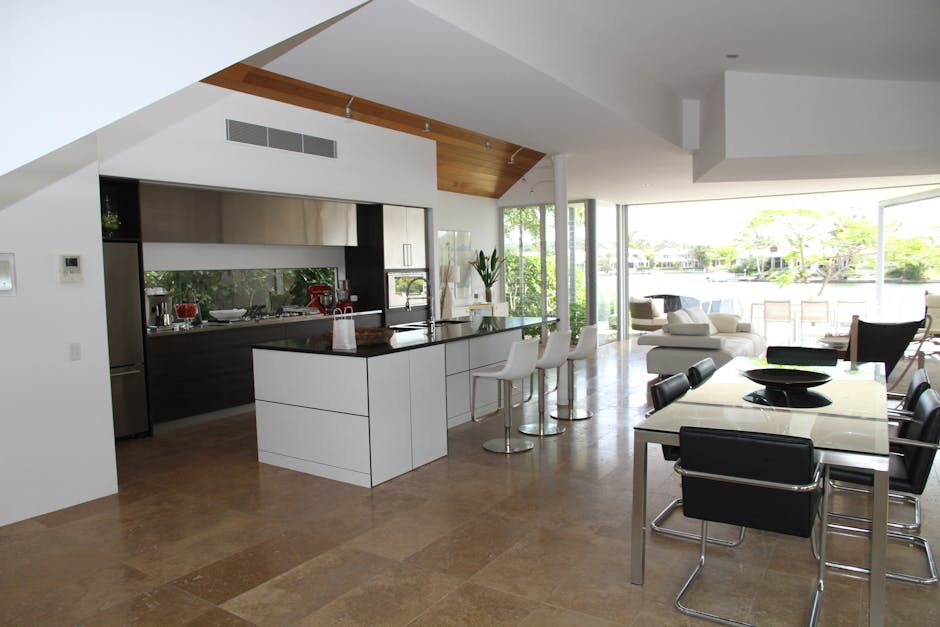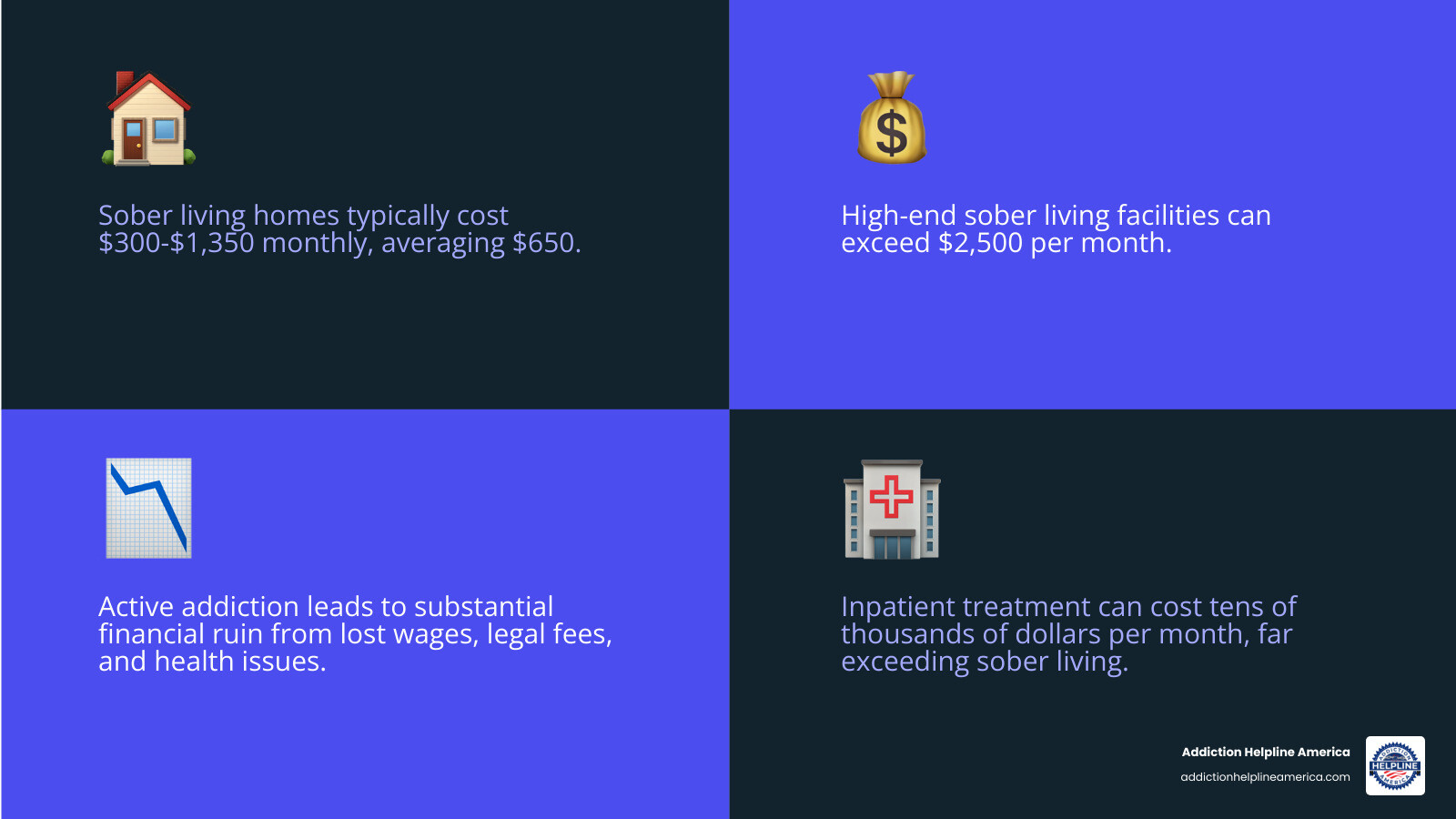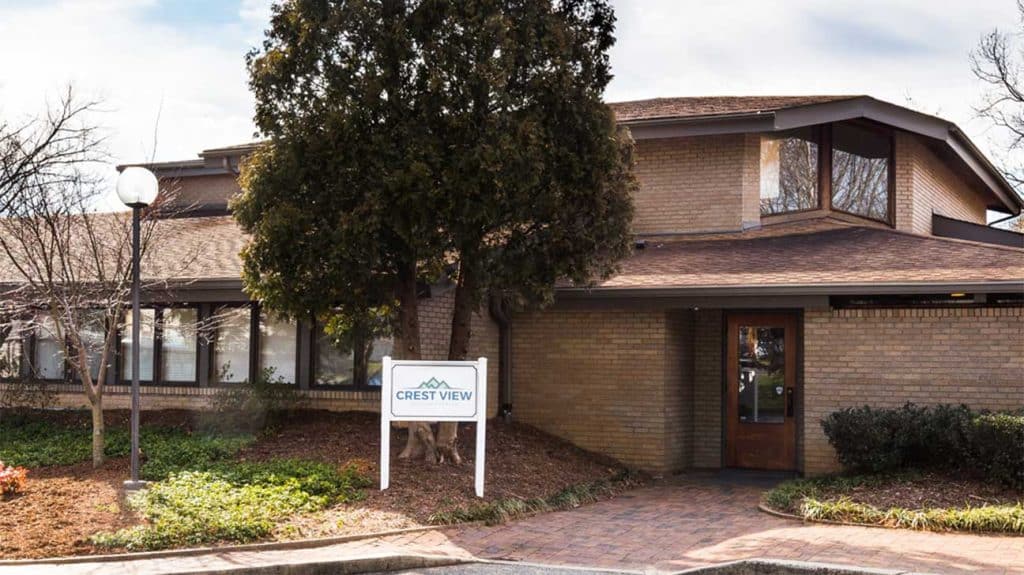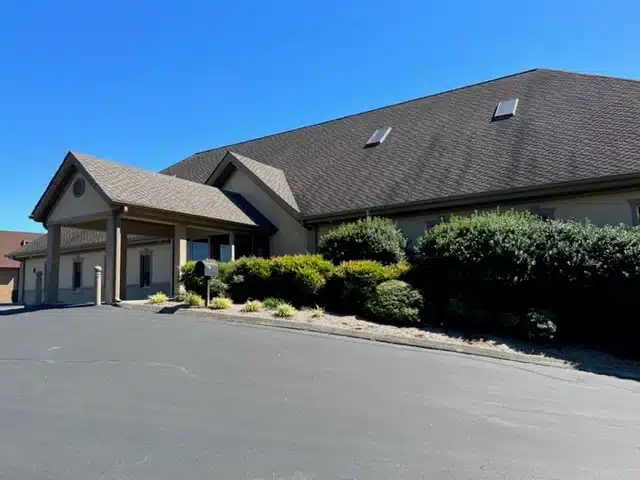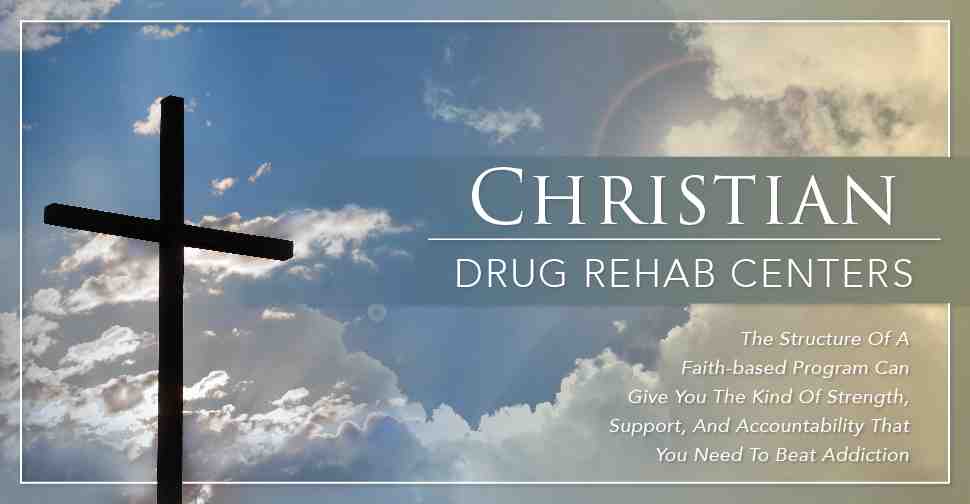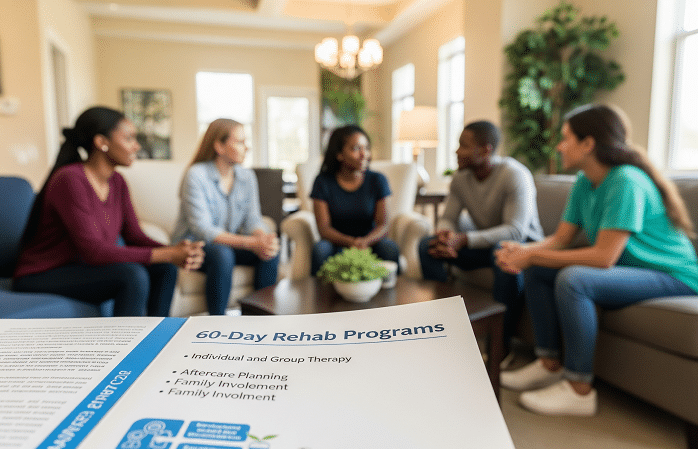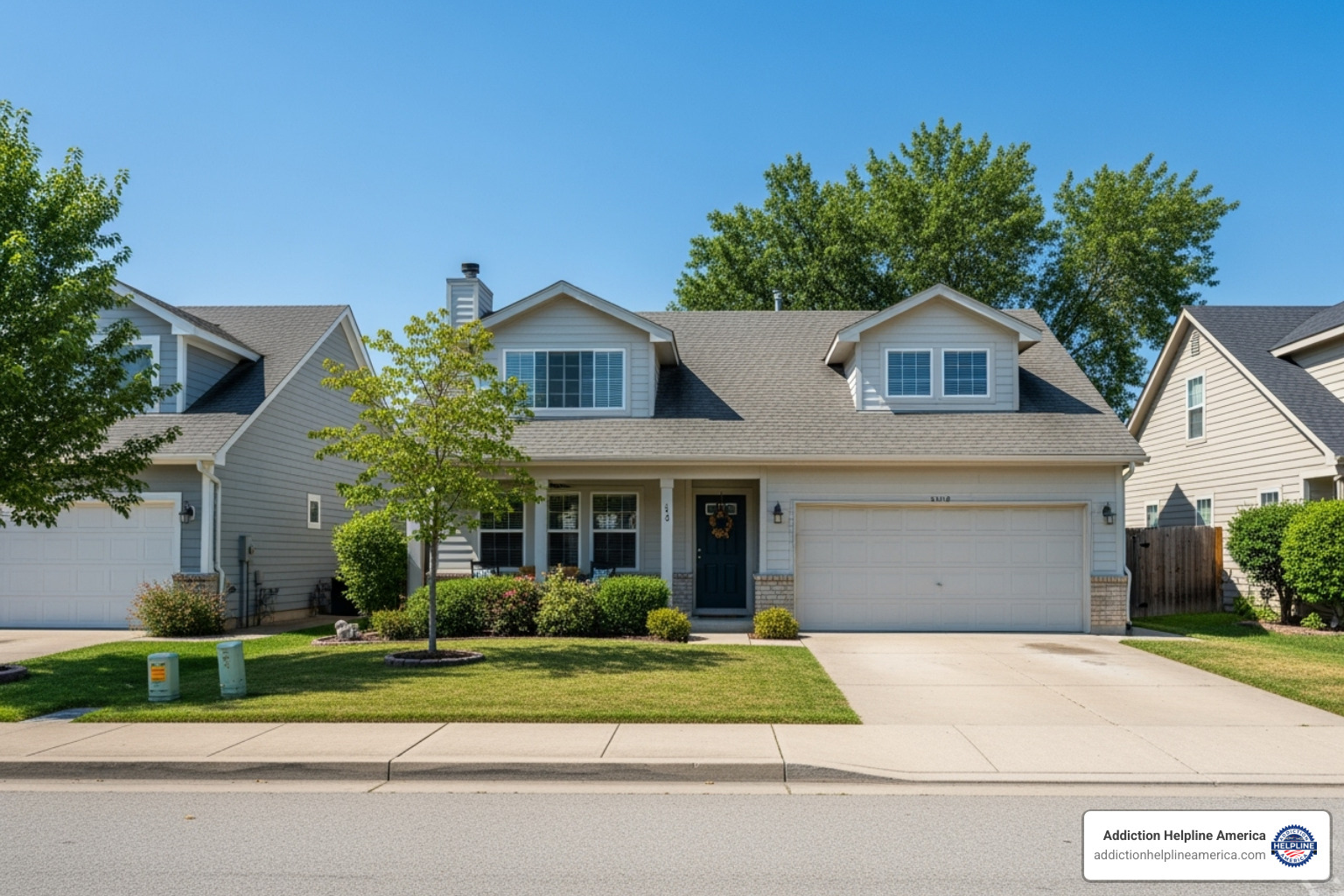
Why Sober Living Reviews Matter for Your Recovery Journey
Sober living reviews offer critical insights into the quality and safety of transitional housing. When searching for a sober living home, you need to know:
- What to look for: Clean facilities, trained staff, clear house rules, regular drug testing, and accountability structures
- Red flags to avoid: Claims of free housing, unsafe conditions, no admissions requirements, untrained staff, or lack of drug testing
- Typical costs: $300-$2,500 per month depending on location and amenities
- Expected outcomes: Research shows residents experience fewer substance-related problems, lower arrest rates, and higher employment
- Average stay: 6-12 months, though many homes allow residents to stay as long as needed
What is a sober living home? A sober living home (also called a recovery residence or halfway house) is a substance-free environment that bridges the gap between intensive treatment and independent living. It provides structure, peer support, and accountability as residents rebuild their lives and develop skills for long-term sobriety.
Resident reviews reveal benefits (supportive community, accountability) and challenges (limited privacy, strict rules). Not all sober living homes are created equal. Some prioritize profit over care, while others maintain high standards through certifications from organizations like the National Alliance for Recovery Residences (NARR).
At Addiction Helpline America, we’ve guided thousands in finding quality sober living options. We know reading reviews is just the first step. This guide provides a comprehensive checklist to help you evaluate your options and ask the right questions.
The Pros and Cons: A Balanced Look at Sober Living Reviews
Choosing a sober living home is a major decision with both advantages and challenges. At Addiction Helpline America, we believe in complete honesty. Let’s look at what sober living reviews from actual residents reveal about the real experience.
The Benefits: Why People Give Positive Sober Living Reviews
Sober living homes offer a unique combination of structure, support, and freedom that is vital in the recovery continuum.
The power of community is real. Being surrounded by people who share your goal of staying sober changes everything. As one resident noted, the camaraderie was “incredibly helpful.” This shared experience reduces the isolation that often leads to relapse.
Accountability structures are a key strength. Curfews establish healthy routines, while random drug testing and breathalyzers maintain a safe, substance-free environment for everyone. As one facility noted, these checks “ensure our sober living program provides a clean environment, where everyone is accountable for their recovery.” House meetings and chores teach responsibility and foster mutual support.
Access to resources is a major benefit. Many homes connect residents with counseling, 12-step meetings, and job training. This continued support is crucial. Many homes require work or education, encouraging productivity and purpose. You’re not just staying sober—you’re building a fulfilling life.
Gradual reintegration into society is a crucial middle step between intensive treatment and full independence. You practice living skills with a safety net, like learning to swim in the shallow end before diving into deep water.
Financially, while homes cost between $300 and $2,500 monthly, they often represent significant cost savings compared to continued substance use or repeated inpatient treatment. It’s a smart investment that can prevent the far greater expenses of relapse.
Most importantly, they lead to improved recovery outcomes. Research published in the Journal of Psychoactive Drugs shows residents experience fewer problems with substances, lower arrest rates, and higher employment rates—benefits that last long after leaving. These statistics represent real people building new lives.
The Drawbacks: Common Challenges Highlighted in Reviews
Understanding potential difficulties helps you prepare and make better decisions.
Limited independence and strict house rules are common complaints. Many people crave autonomy after treatment, but sober living homes have structure (curfews, meetings, etc.). These rules protect everyone’s recovery but can feel restrictive. It’s a trade-off: more structure means less independence, temporarily.
Privacy becomes a luxury in communal living. Shared rooms and common areas can be tough if you need alone time. You might share space with someone whose habits differ from yours.
Housemate conflicts over chores, noise, or personality clashes are common. While staff can mediate, navigating these dynamics requires patience and communication.
The financial burden is real. Monthly costs ($300 to $2,500+) can be a burden, as insurance rarely covers sober living. Most residents pay out-of-pocket, though some homes offer scholarships or payment plans.
Relationships outside the home can be strained. The home’s structure may limit time with family and friends, and you may need to distance yourself from triggering relationships. Setting healthy boundaries is crucial for recovery, but it can be emotionally difficult.
Limited availability can be frustrating. Quality homes often have waiting lists, especially in areas with few options. Waiting for a spot when you’re ready can be discouraging.
These challenges are real, but for most, the benefits far outweigh the drawbacks. The key is having realistic expectations and choosing a home that aligns with your recovery goals.
The Ultimate Checklist: How to Choose the Right Sober Living Home
Choosing the right sober living home is a critical decision. It’s about finding an environment where you can heal and build a foundation for lasting sobriety. This checklist, based on countless sober living reviews and resident experiences, will help you steer your options.
Step 1: Researching and Reading Sober Living Reviews
Start by doing thorough research. Since most sober living homes aren’t state-licensed (as they don’t offer clinical treatment), your independent research is critical. Look for established homes with a solid reputation.
- Read online reviews wisely. Look for patterns in resident feedback, not isolated complaints. Recurring themes about staff, cleanliness, or rule enforcement are more telling than a single review.
- Seek personal referrals. Ask therapists, counselors, or 12-step group members for recommendations. Their insights can reveal which homes truly support residents. Treatment providers often have trusted relationships with quality facilities.
- Look for certification. Certification from the National Alliance for Recovery Residences (NARR) is a strong indicator of quality, showing a home meets national standards for safety, structure, and support. It’s a significant green flag.
Step 2: Vetting the Facility and Staff
Once you have a shortlist, you must visit the homes. This step is non-negotiable.
- Tour the facility. Is it clean, well-maintained, and welcoming? A safe, clean space is essential for healing. Assess safety features like working smoke detectors, fire exits, and secure entryways. Disrepair or safety hazards are major red flags.
- Meet the staff. Ask about their training, certifications, and recovery experience. Are they genuinely invested in residents’ success? Look for professionalism and ethical behavior, and trust your gut to avoid operators who prioritize profit over people.
- Check admissions requirements. Reputable homes have clear criteria, often requiring 30 days of sobriety and completion of a treatment program. These standards ensure all residents are committed to recovery.
- Watch for major red flags. Be wary of any facility with:
- Claims of free housing (often a sign of insurance fraud).
- Unsafe or rundown conditions.
- No requirement for abstinence or drug testing.
- Lack of clear house rules, safety provisions, or ethical standards.
- Untrained or uncertified staff.
Step 3: Understanding the Rules and Costs
Before signing, be certain you understand all rules and financial commitments.
- Know the house rules. Understand the policies on curfews, chores, meetings, and guest policies. Some require work, school, or 12-step meeting attendance. These rules create an orderly environment for recovery. Ensure you can commit to them.
- Clarify the abstinence policy. Ask about the frequency of drug and alcohol testing. Random testing is the gold standard for accountability.
- Get a detailed cost breakdown. Fees vary by location and amenities, from $300 to over $2,500 monthly. Ask about rent, utilities, food, move-in fees, and refund policies to avoid stressful financial surprises.
- Understand payment options. Insurance usually doesn’t cover sober living, so most residents pay out-of-pocket. Ask about scholarships, grants, or payment plans; many homes offer financial assistance.
To put the investment in perspective, consider this comparison:
When you look at these numbers, sober living often represents significant savings compared to the devastating financial costs of active addiction or the expense of repeated inpatient treatment. It’s an investment in your future that can actually save you money in the long run.
At Addiction Helpline America, we know this process can feel overwhelming. That’s why we’re here—to help you sort through your options, ask the right questions, and find personalized addiction treatment options that fit your specific situation. You don’t have to figure this out alone.
Making the Most of Your Sober Living Experience
After choosing the right home based on sober living reviews and research, it’s time to make the most of the experience. This is your chance to actively build the life you want in sobriety.
Lean into the structure. Rules like curfews, meetings, and chores may feel restrictive, but they help establish healthy routines. By participating, you practice accountability and contribute to the community. This structure, often praised in positive sober living reviews, is a foundation for lasting change.
Build healthy relationships. Your housemates are fellow travelers who understand your journey. Connect with them, as they will celebrate your wins and support you through tough days. Learning to communicate openly and resolve conflicts patiently is an essential skill for life.
Use all available resources. Take advantage of counseling, 12-step meetings, and job training. Most homes require work or school, which provides purpose, structure, and practical skills for independent living. You’re developing life skills—from financial management to workplace navigation—that make sobriety sustainable.
Find joy in sobriety. Recovery is about finding what brings you joy without substances. Engage in sober activities with housemates, like hiking, game nights, or exploring your community. In an area like Tampa, you could walk the scenic Tampa Riverwalk. These experiences prove sobriety can be rich and fun.
Be honest, follow suggestions, and put in the effort. The residents who thrive are the ones who show up fully, use their tools, and reach out for support. The coping skills you develop here will serve you long after you move out. At Addiction Helpline America, we know that engagement is the key to change. Your recovery is happening now. Make it count.
Frequently Asked Questions about Sober Living
Here are answers to some of the most common questions we hear from individuals and families considering sober living.
How long do people typically stay in a sober living home?
The length of stay is highly individualized, but we can provide some benchmarks. The average stay is 6 to 12 months. Research in the Journal of Psychoactive Drugs shows an average of 5.5 to 8.5 months. While 90 days is a recommended minimum, a longer stay allows more time to develop coping skills.
Most homes have no set time limit. You can stay as long as you follow the rules and work on your recovery. This flexibility allows you to solidify sobriety and build confidence before moving on.
Longer stays are associated with better recovery outcomes, as shown by research. Giving yourself enough time in a supportive environment is key to long-term sobriety.
What is the difference between a sober living home and a halfway house?
The terms “sober living home” and “halfway house” are often used interchangeably, but they have key differences.
-
Sober living homes (SLHs) offer a supportive, drug-free environment with no set time limit on residency. They are typically privately funded by resident rent, don’t always require prior formal treatment, and are not state-licensed as they don’t offer clinical services. The focus is on peer support and accountability.
-
Halfway houses are transitional homes, often for those leaving rehab or incarceration. They usually have residency time limits (e.g., 6-12 months), require completion of a formal treatment program, and may be government-funded. They tend to have a higher level of structure and supervision.
In short, sober living homes typically offer more flexibility, while halfway houses have a more defined transitional period. Sober living reviews often reflect these differences in resident experience.
What are the success rates associated with sober living homes?
The answer is overwhelmingly positive: sober living homes are effective at reducing relapse and helping people achieve long-term sobriety, and research backs this up.
Studies show that sober living significantly improves recovery outcomes. Residents experience:
- Improved abstinence rates at 6, 12, and 18-month follow-ups.
- Lower arrest rates, as the accountable environment discourages risky behaviors.
- Higher employment rates and increased housing stability, which are the real markers of successful recovery.
Peer support is a key factor in these outcomes. Living with others who share your goals creates a powerful environment for encouragement and relapse prevention, a value often cited in positive sober living reviews. At Addiction Helpline America, we’ve seen this evidence come to life. Sober living homes play a vital role in fostering long-term success.
Conclusion: Taking the Next Step in Your Recovery Journey
This guide has covered how to find a quality sober living home, read sober living reviews critically, and spot red flags. The key takeaway is that a supportive environment matters immensely. Research shows quality sober living homes lead to better outcomes, including fewer relapses and higher employment. Since not all homes are equal, your research is critical.
When evaluating homes, look for NARR certification, schedule an in-person tour, and verify they have clear requirements, regular drug testing, and trained staff. Trust your gut; if something feels off, it probably is.
Investing in the right sober living home pays dividends. It’s about community, resources, and life skills. The structure and accountability are crucial for navigating early recovery. Your recovery is unique, and you deserve a dignified, supportive environment. The right sober living home can be transformative, whether you’re transitioning from treatment or seeking a stable foundation.
At Addiction Helpline America, we know finding quality resources is challenging. Our team offers free, confidential, and personalized guidance, connecting you to our nationwide network of treatment centers. We’ve helped thousands, and we’re ready to help you.
You don’t have to do this alone. If you have questions or need help understanding your options, we’re here. Reach out today to find personalized addiction treatment options and take control of your recovery journey. Your future self will thank you.
Our helpline is 100%
free & confidential
If you or someone you care about is struggling with drug or alcohol addiction, we can help you explore your recovery options. Don’t face this challenge alone—seek support from us.
Programs
Resources
Will my insurance
cover addiction
treatment?
We're ready to help
Find the best
drug or alcohol treatment
center
Are you or a loved one struggling with addiction? Call today to speak to a treatment expert.
